Acapulco Dining Chair
You are here: Home / Interior Design / 20 Popular Types of Chairs for Home on Today's Furniture Market
I may earn a small commission if you buy through the links in this website without any extra cost to you. My Recommendations however are not biased in any way.
There are so many different types of chairs that come in so many styles, sizes and prices, we would need a textbook-size amount of space to cover them all, so we've selected 20 of the best styles on today's market that are trendy and unique. You will find some well known kinds and also some rare ones as well.

As an Amazon Associate I earn from qualifying purchases.
Accessorize your home or office with the following types of chairs we profile in this review and you'll always have a comfy place to sit.
Each chair style is accompanied by a couple of pictures to get an idea of how they look.
1. Accent chair
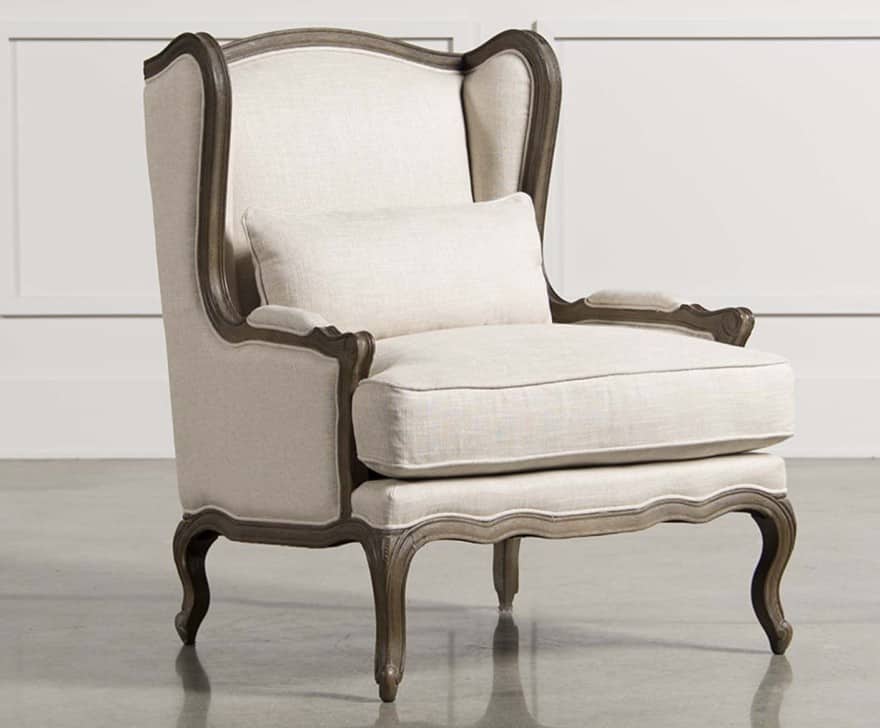
Source
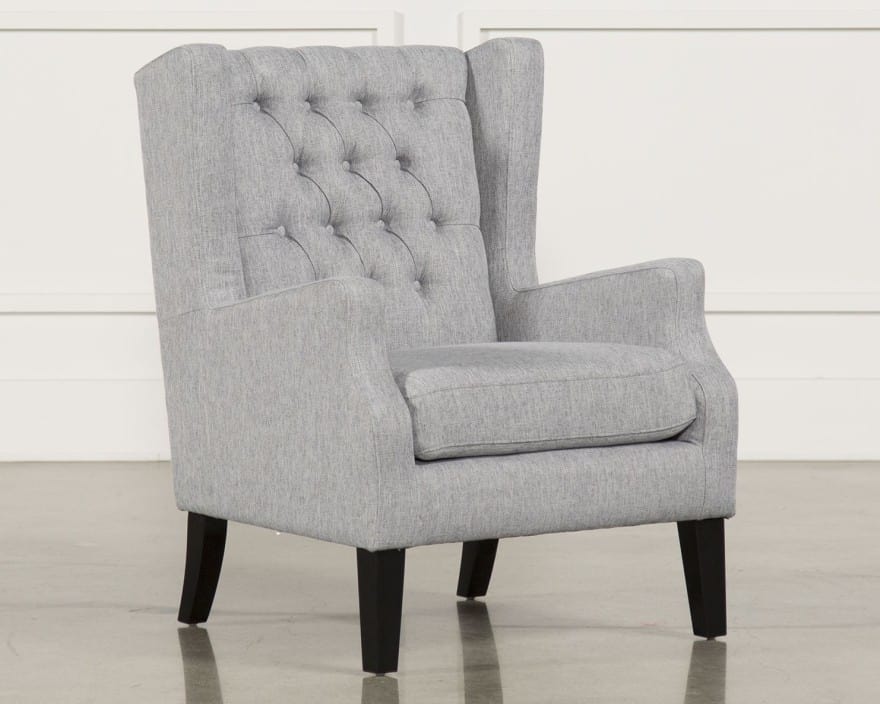
Source
Perhaps the best way to describe an accent chair is to compare this piece of furniture to a chameleon. It adapts seamlessly to any setting, but not necessarily because it matches the room's colors, style or functionality.
Some accent chairs are chosen specifically to provide a room with a touch of contrast or a focal point. At other times, they match everything else in the room. Usually belonging to the upholstered furniture class, accent chairs can be large or small, but they're often "sculptural" in nature so they add a touch of drama and extra seating to any room setting.
2.Bergère chair
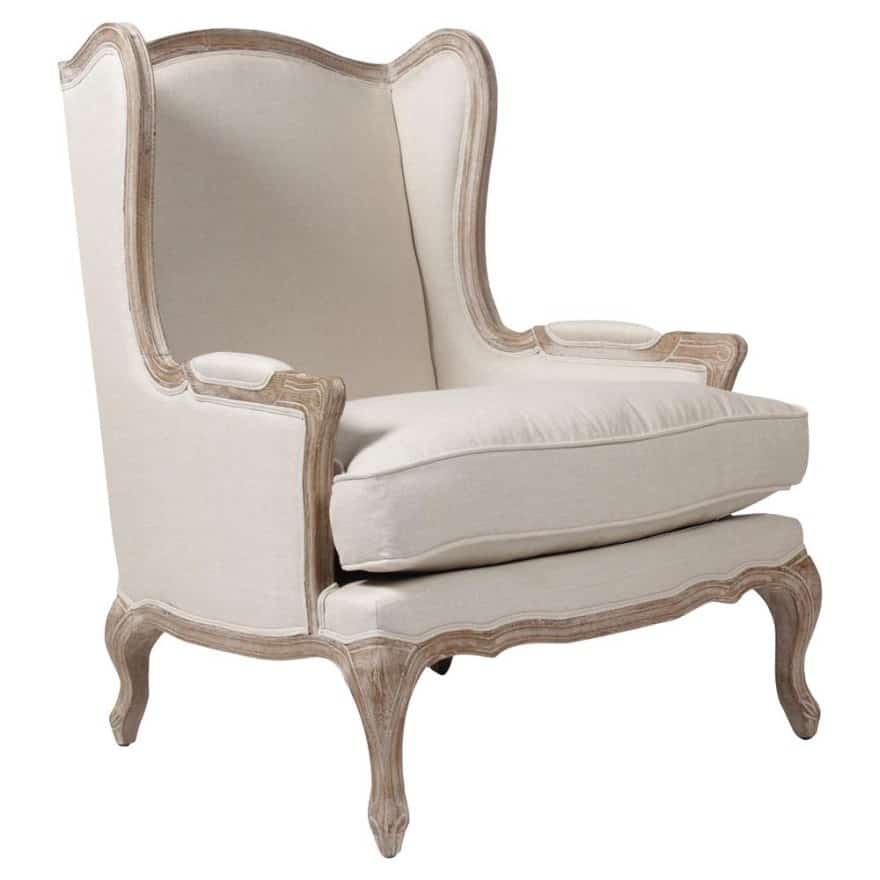
Source
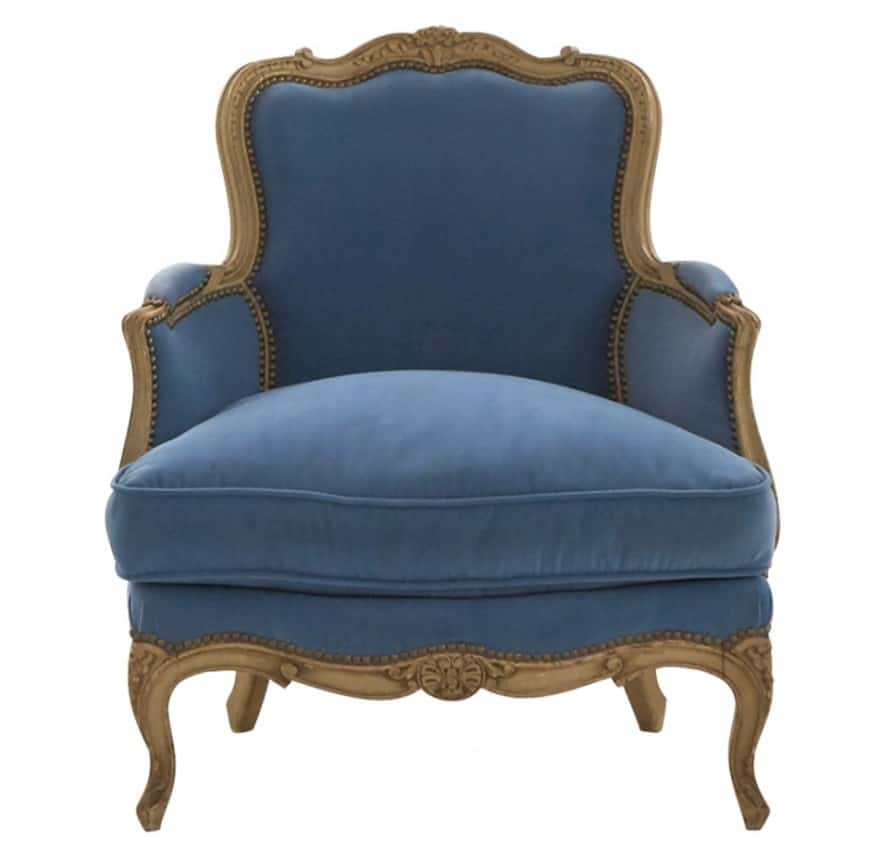
Source
Love decorating with a European flair? Add at least one Bergère chair to your decorating scheme. This French-inspired furnishing is rooted in the past, introduced to 17th Century society by French nobility who first commissioned furniture makers to craft a chair meeting these criteria: it must be unique, elegant and comfortable.
You can identify the Bergère style chair by its exposed wood frame, upholstered back and seat, but seat cushions aren't always attached.
These chairs fit into living rooms but they're especially appropriate for bedrooms paired with matching ottomans. Looking to decorate your home like a palace on the budget of a chambermaid? You could achieve that aim with this chair.
3. Fauteuil chair
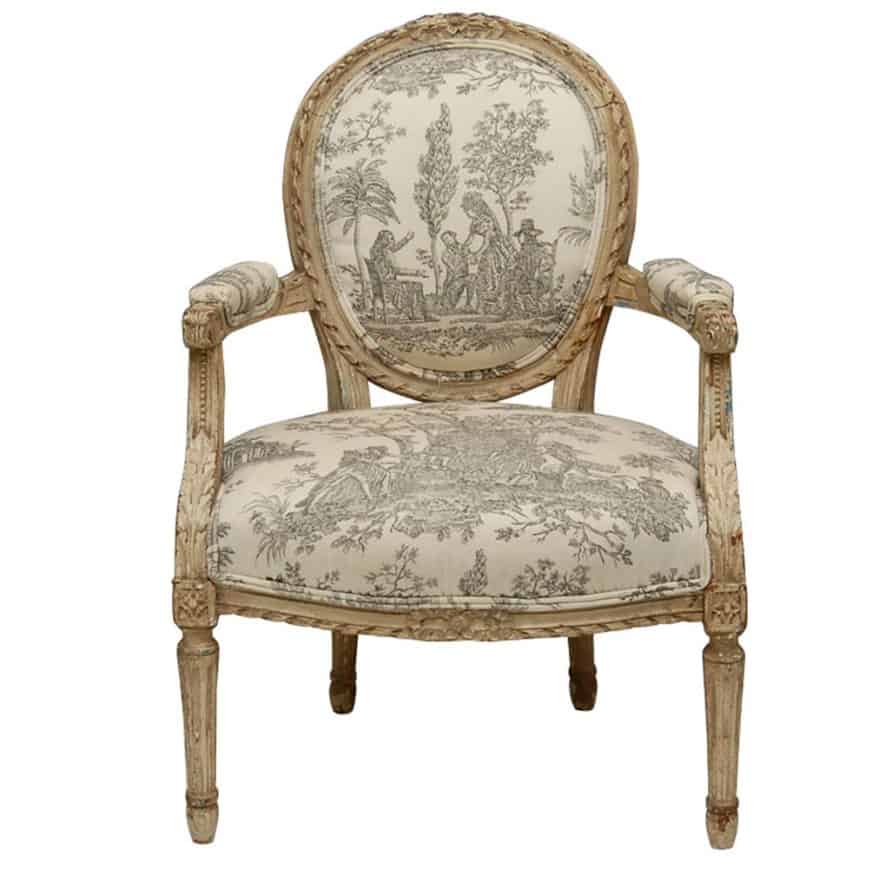
Source
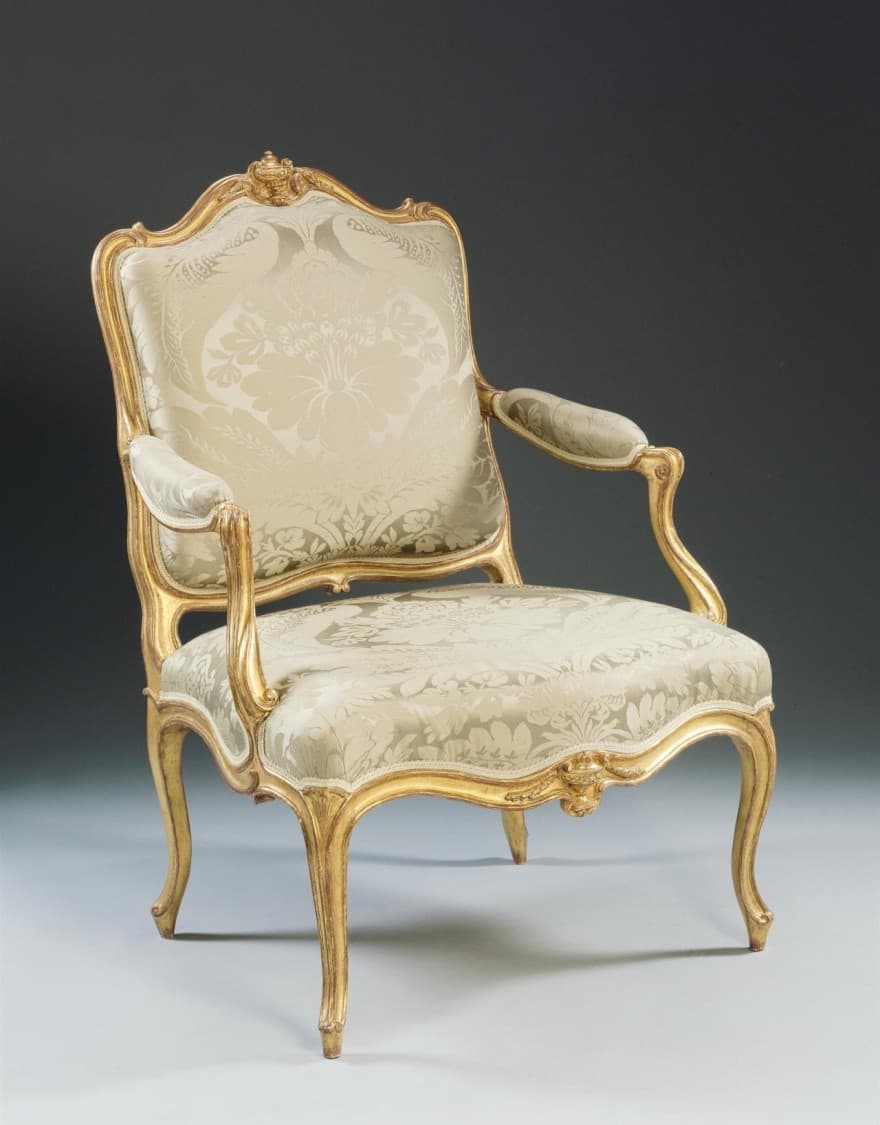
Source
While we're on the subject of French-inspired furniture, we'd like to introduce a cousin of the Bergère chair: The Fauteuil.
This ornate, upholstered chair always features elegant textile upholstery and the easiest way to identify it is to look for this armchair's open sides.
The upholstered touches—seat, arm pads and back—may or may not be attached. Usually crafted of wood, this chair's frame will always be exposed, so if you find a chair that doesn't exhibit this feature, you may not be looking at a Fauteuil chair.
On the other hand, if you spot cabriole rather than straight legs, this is a good clue that you've properly identified this chair's pedigree.
4. Rocking chair
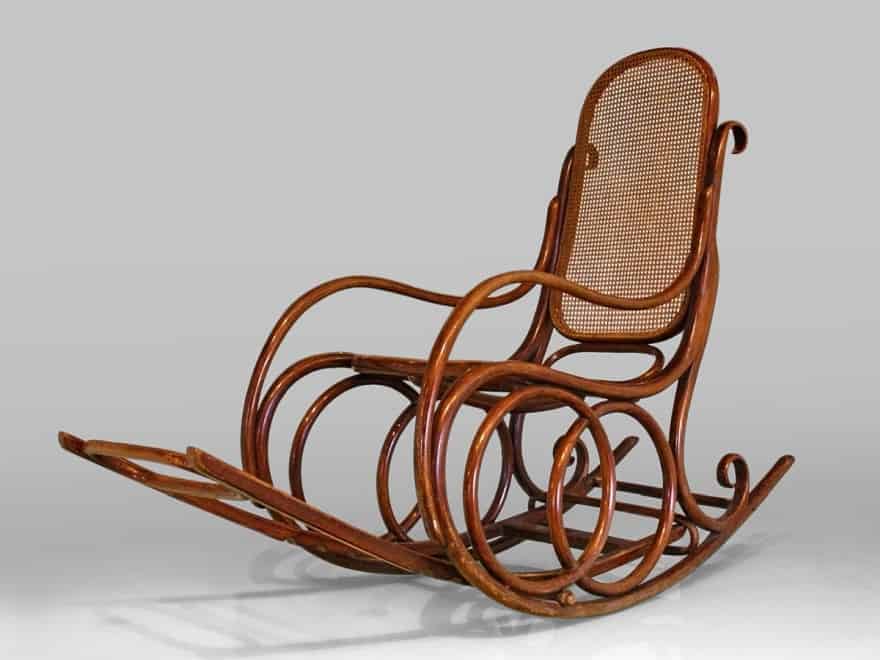
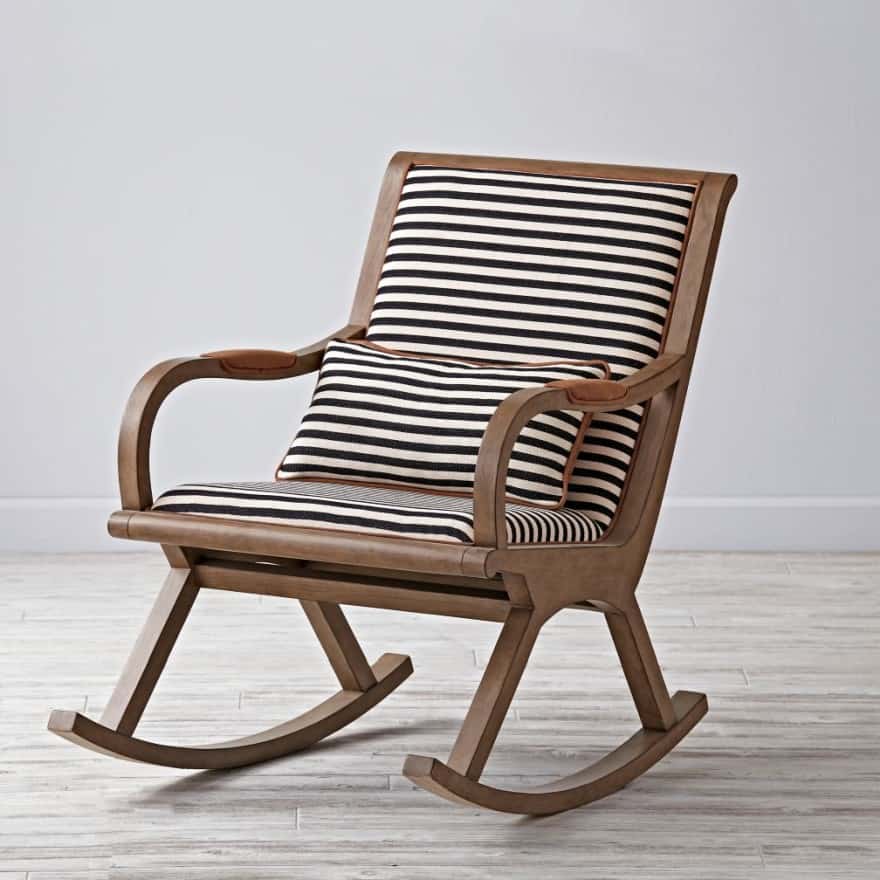
Source
The French may insist elegant chair design is their exclusive domain, but America gets credit for the rocking chair.
Furniture historians speculate that the child's rocking horse or cradle inspired the first design, but Benjamin Franklin gets full credit for its invention around 1710.
Functional, simple and equally at home in baby's nursery or on a front porch, rocking chairs have evolved from a one-style-fits-all look to variations that include the Windsor, Boston, Bentwood and Adirondack.
Style identification is based on the way slats, curves and embellishments are shaped. Credited with helping moms get babies to sleep, rocking chairs also provide comfort to those seeking the calming, therapeutic tempo that soothes the mind and the body.
5. Chesterfield chair
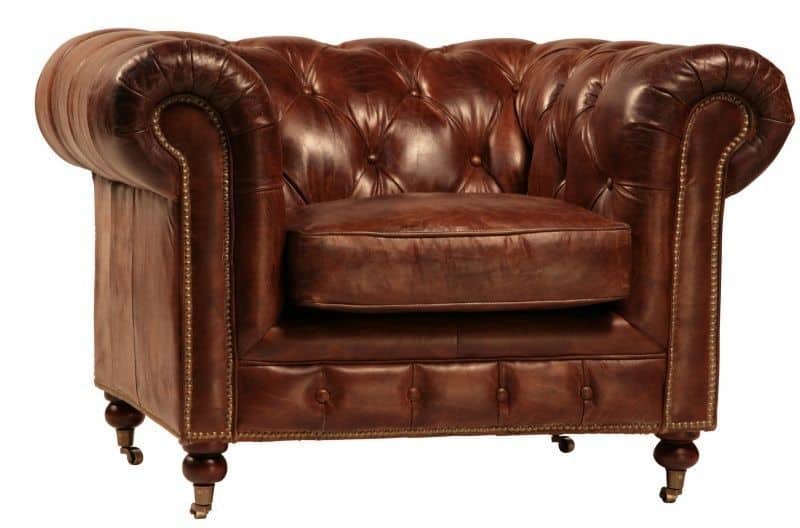
Source
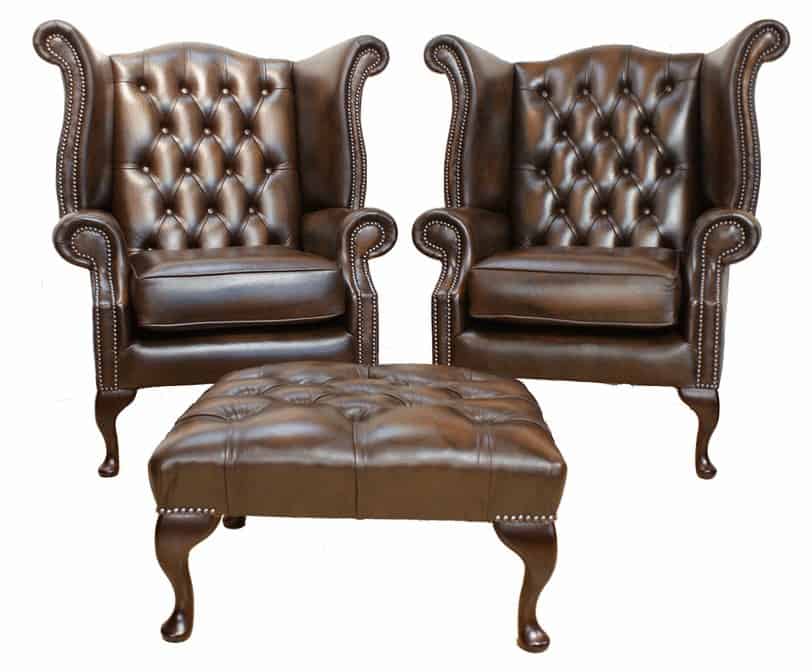
Source: http://www.periodstyle.co.uk/
The Chesterfield chair is an adaptation of the Chesterfield sofa, but even historians argue about this ornate chair's origins.
The Earl of Chesterfield may have inspired the name, but rumor favors the chair being commissioned by Lord Philip Stanhope, the 4th Earl (1694-1773) of Chesterfield.
Choose your favorite if you like regaling your guests with history behind your furnishings. How can you detect a true Chesterfield? Look for low club-styling that takes its lead from the sofa plus beefy scroll arms that are the same height as the chair back.
Most often studded with buttons or tufted, Chesterfield chairs are frequently made of leather, but that doesn't mean you won't find them covered in velvet, traditional textiles or even mink!
6. Dining chair
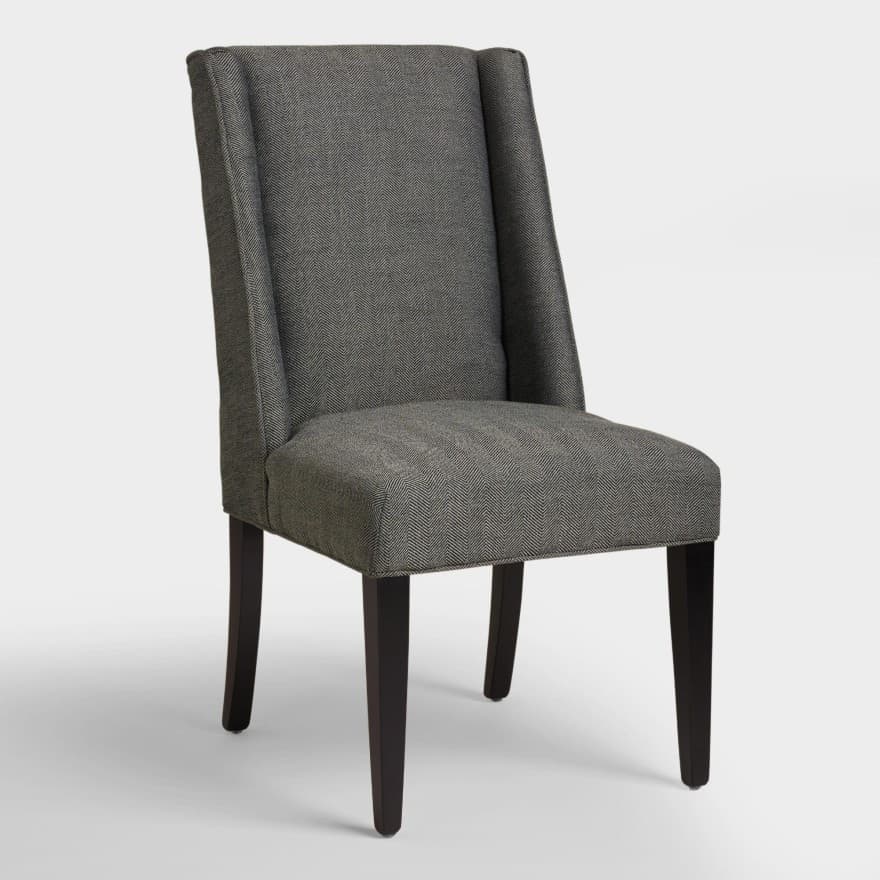
Source
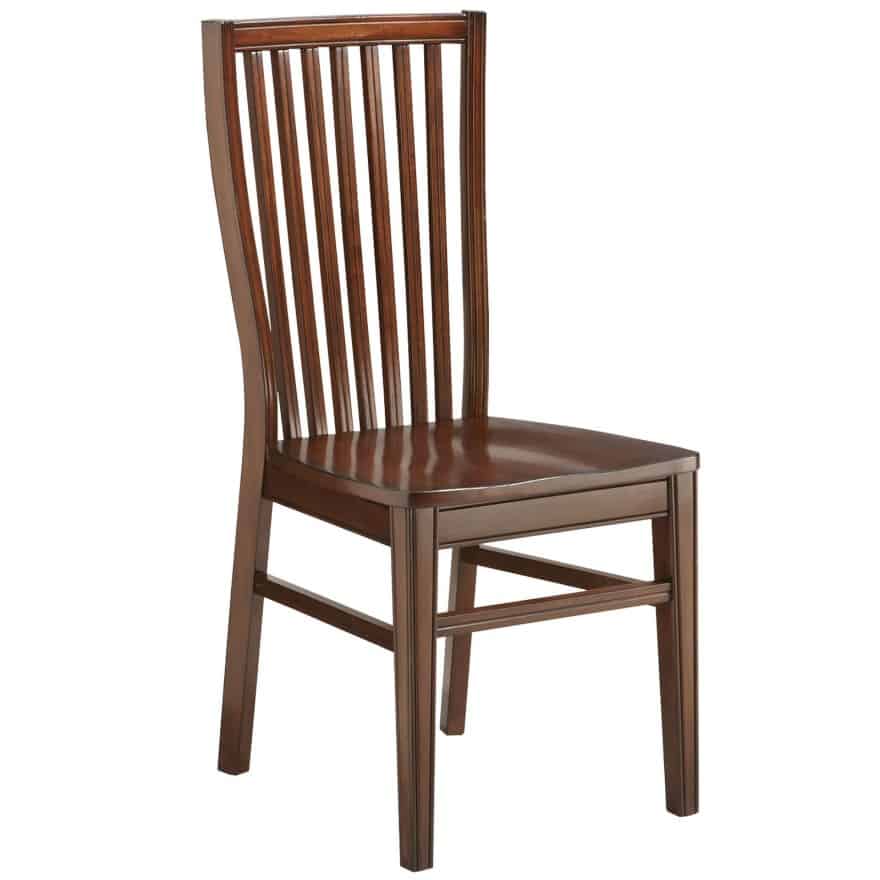
Source
According to the Old Testament, chairs were reserved for Pharaohs and kings, serving as thrones rather than seating. Commoners dined on floor mats until societies realized that eating on the ground introduced dirt into foods being served. Stools are thought to be precursors to dining chairs but once backs were added, space became the biggest design factor.
Fitting six or 12 chairs beneath a tabletop required skillful planning. For centuries, wood was used exclusively in the manufacture of dining chairs and it still remains a favorite framing material, though metals and plastics have become equally popular.
Available in every furnishing style and period under the sun, not every decorator insists that their dining room chairs match each other. You may follow that trend if you love to change things up.
7. Adirondack chair
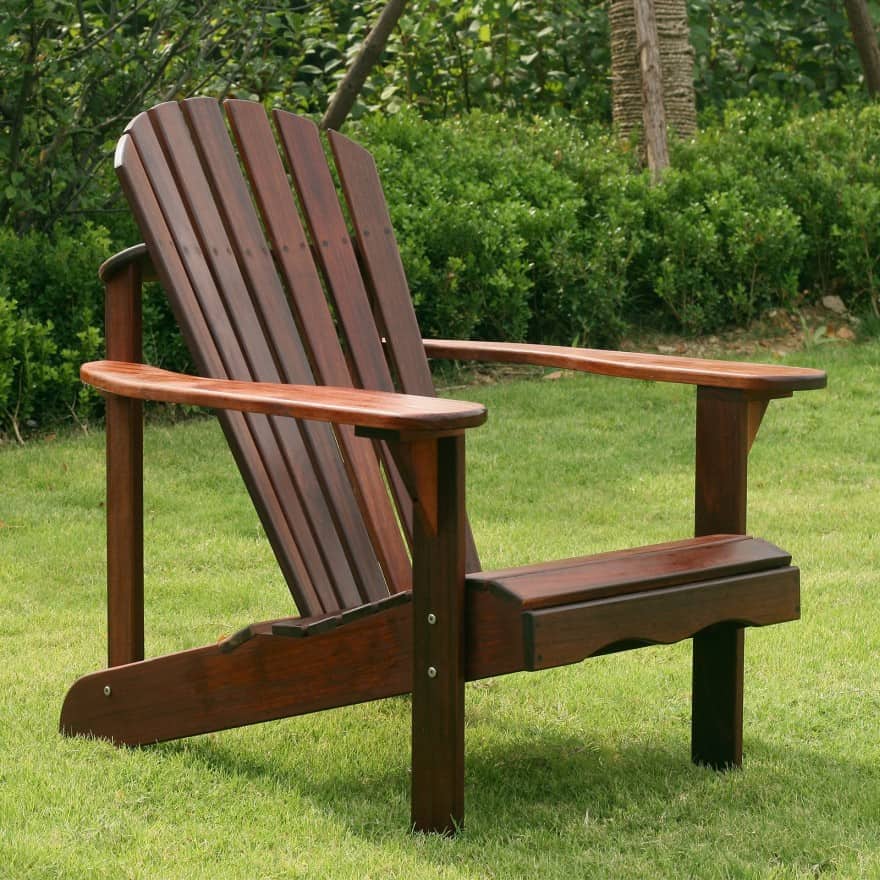
Source
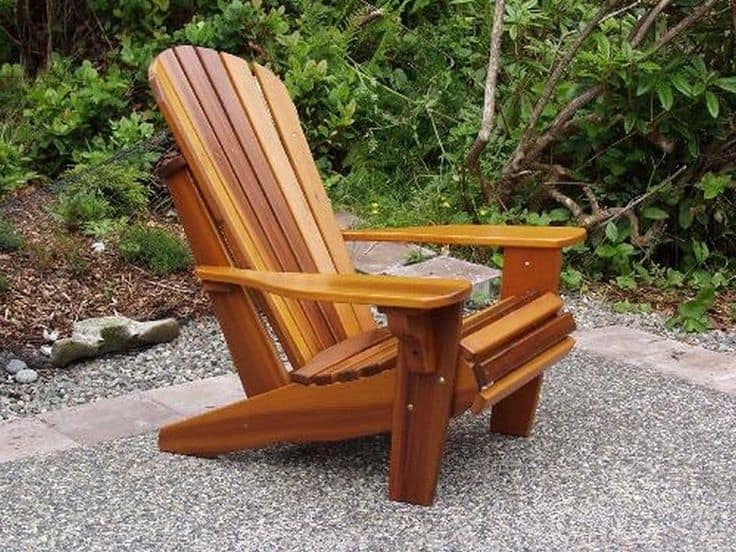
Source
The original design of the Adirondack chair is credited to Massachusetts native Thomas Lee who spent summers in Westport, New York in the heart of this mountainous area.
Lee dropped out of Harvard Law school to devote himself to nature and creating a chair that suited the region's rugged terrain. Fortunately, Lee's family was wealthy and could support him because it took him three years to perfect his chair's iconic shape, armrests, high back silhouette and slanted seat.
Lee's final version was sturdy, balanced and comfortable and shoppers snapped them up once they hit the market because they fit where other chairs wouldn't: On flat surfaces, sandy beaches and hilly terrain. The Adirondack chair has stood the test of time and come to personify the quintessential "lawn chair," whether crafted of wood, plastic or molded materials.
8. Chaise longue chair
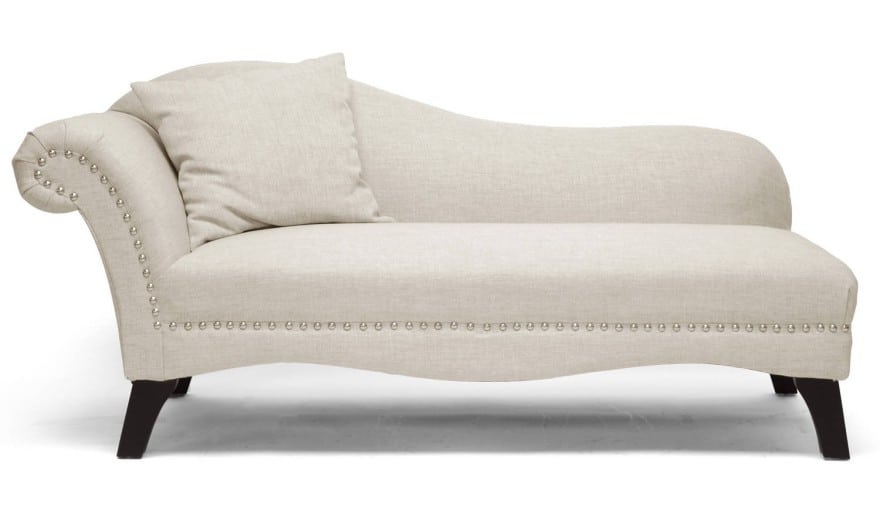
Source
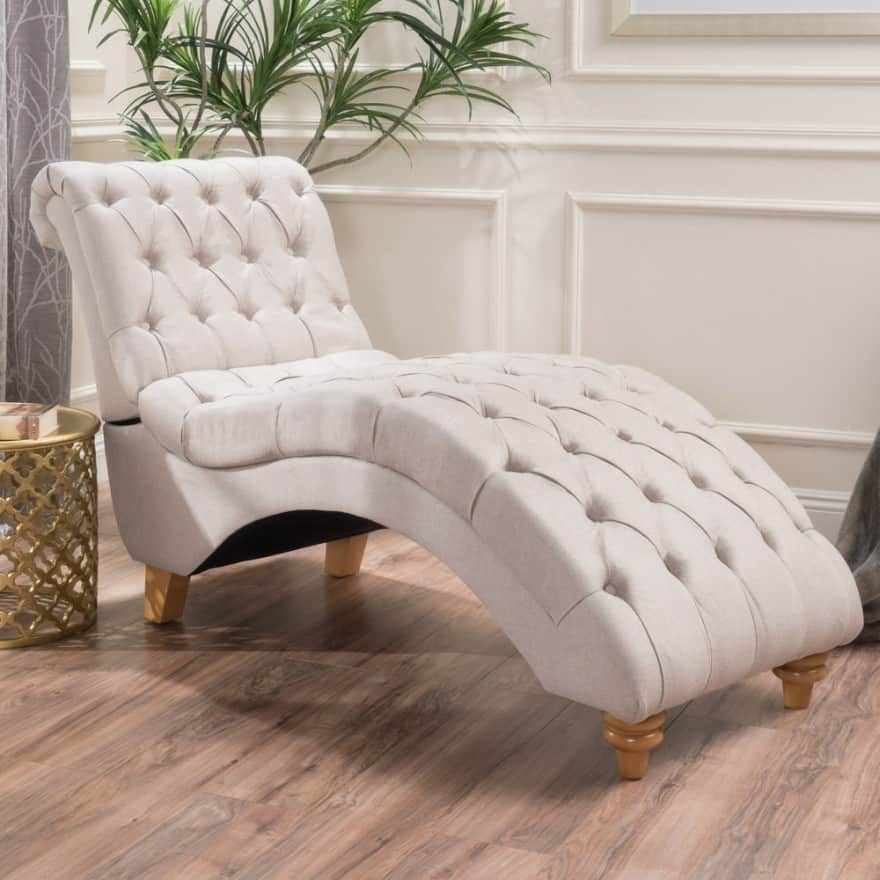
Source
Egyptologists have found evidence of chaise longue chairs circa 3100 to 2890 BC. The earliest chairs were made of palm fronds woven with cords or rawhide, but over time, frames were made of ivory and ebony.
Popular with Romans, Greeks and the French, chaise longues served as throne-room recliners for royalty and relaxation benches for pregnant women, reaching their apex in Victorian England where every woman of means required one for her boudoir.
Contemporary lifestyles literally pushed these chairs out of the house, which is why chaise longues are now usually relegated to patios, around pools and in other outdoor settings. They come in a wide range of materials and prices. If you've got a pool or patio frequented by family and friends, you likely own some of these already.
9. Deck chair
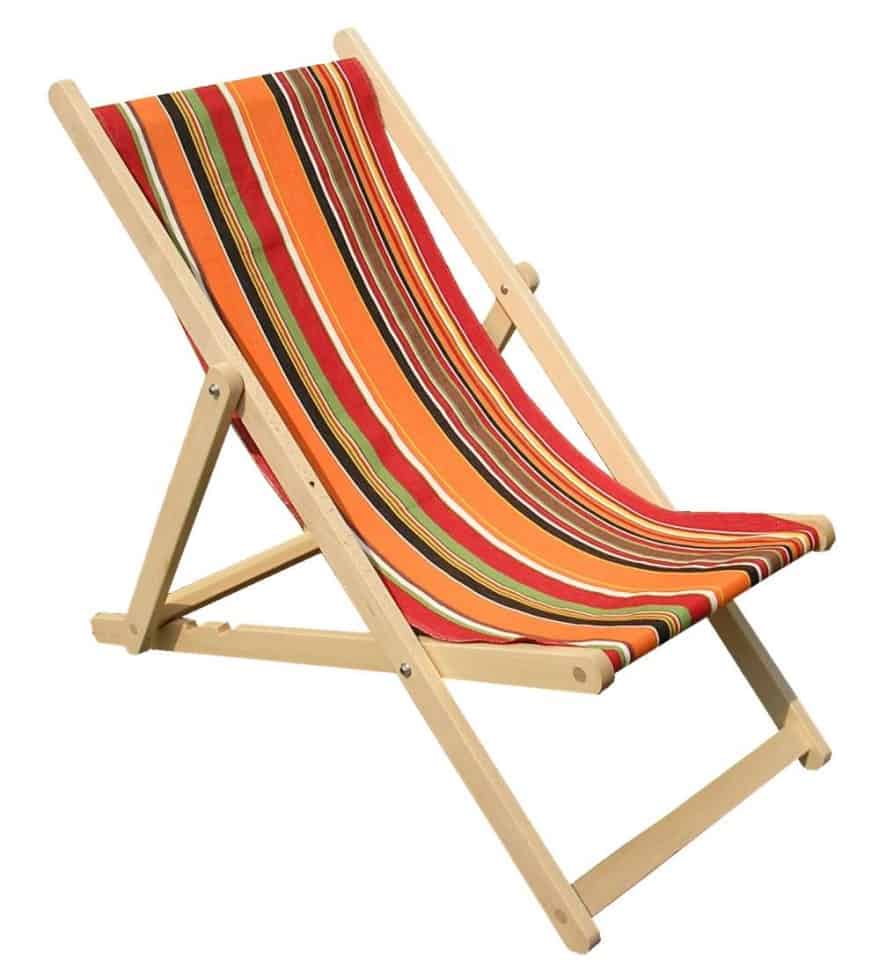
Source
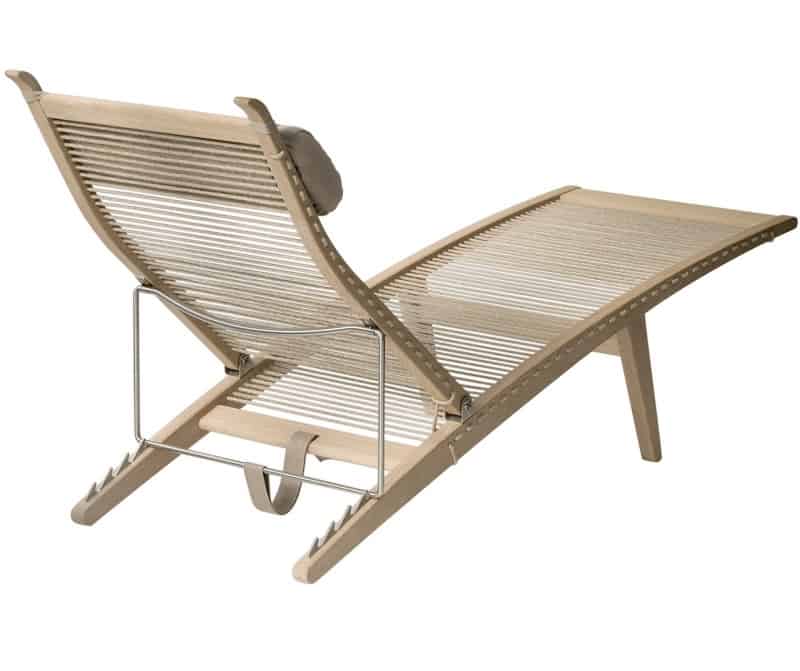
Source
What's the difference between a chaise longue and a deck chair? Not much, say furniture historians, though to be fair, deck chairs are designed to be used as seating on boat decks, whether that craft happens to be small cruiser or the Titanic.
Based on an Egyptian seat that's considered the first folding chair design, deck chairs became popular in the 17th Century when there was a need for collapsible chairs that could be set up so witnesses could watch executions.
The deck chair received a makeover when John Thomas Moore filed for a patent in 1886 and marketed them to boat owners and folks in need of portable seating to watch lawn tennis matches. Whether made of webbing, canvas or textiles, today's deck chair remains a popular shopping choice for anyone seeking to furnish their boats with collapsible chairs that can be stowed when not in use. Far as we can tell, they're no longer used for witnessing executions.
10. Office chair

Source: http://www.ikea.com/us/en/catalog/products/50332238/
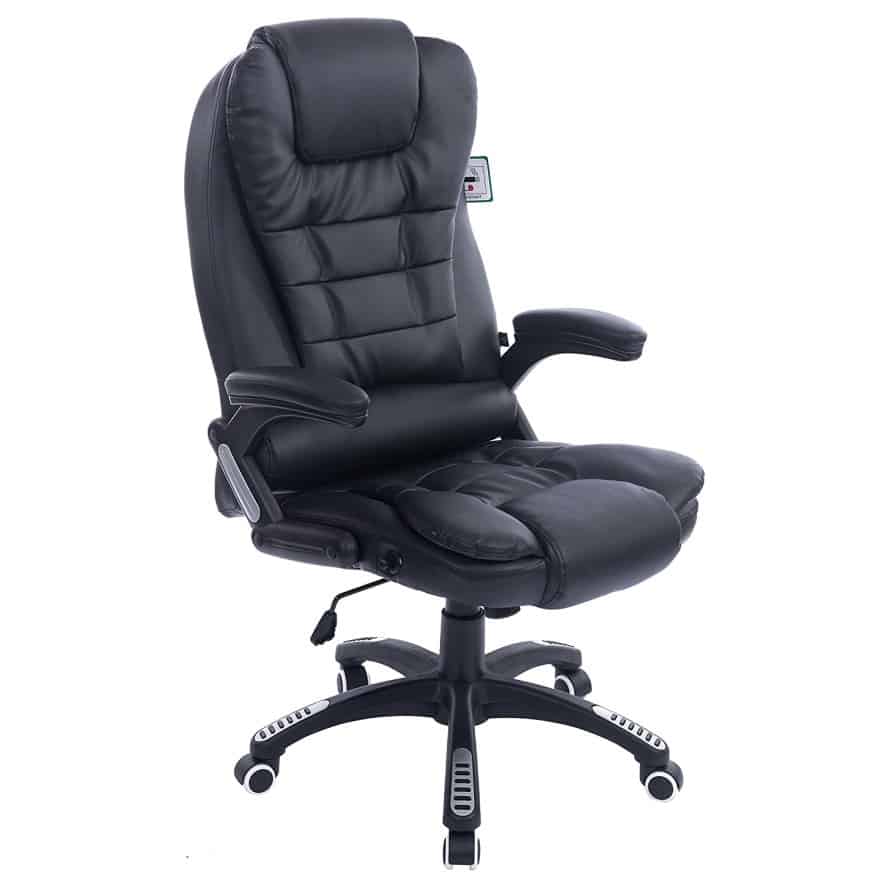
Source
Mind if we credit the Industrial Revolution with the advent of and need for office chairs? After all, until the world began to conduct business on a large scale, people worked at home or built careers in retail, where workers were encouraged to do everything but sit down.
A mid-19th century invention, the first office chair was made around 1840 by explorer Charles Darwin who put wheels on the feet of one of his chairs so he could move around more adroitly.
As workplaces evolved, it became evident that office workers would need places to sit to process paperwork, but don't kid yourself into thinking that bosses took pity on workers with sedentary jobs. In fact, time-motion studies proved that clerical employees are more productive if they stay seated rather than standing.
Like fashion, office furnishings became the darling of designers eager to match chairs to decorating schemes. In 1976 the ergonomic office chair was introduced, but the trend toward home offices is likely the biggest reason this style of chair remains so diverse and popular.
11. Acapulco Chair
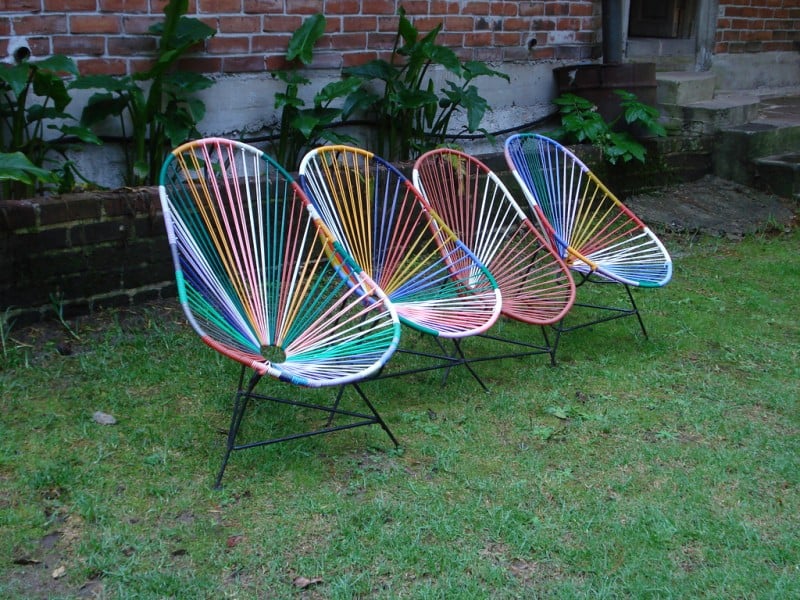
Source: https://www.flickr.com/photos/vladimix/1471836641
According to editors at Apartment Therapy, nobody knows who invented the Acapulco chair, but its popularity is said to have originated with celebrity visits to this town in the 50s and 60s that included Liz Taylor and President Kennedy.
Crafted of vinyl cord that's woven around a metal framework, the original pear-shaped Acapulco chair has deep roots in Mayan hammocks, say some historians.
Today's versions include loveseats and leather versions. Colorful? Si! These chairs make ideal patio seating because they are so festive, so if your party-giving style includes Mojitos and Margaritas, these outdoor chairs are a perfect décor fit.
12. Armchair
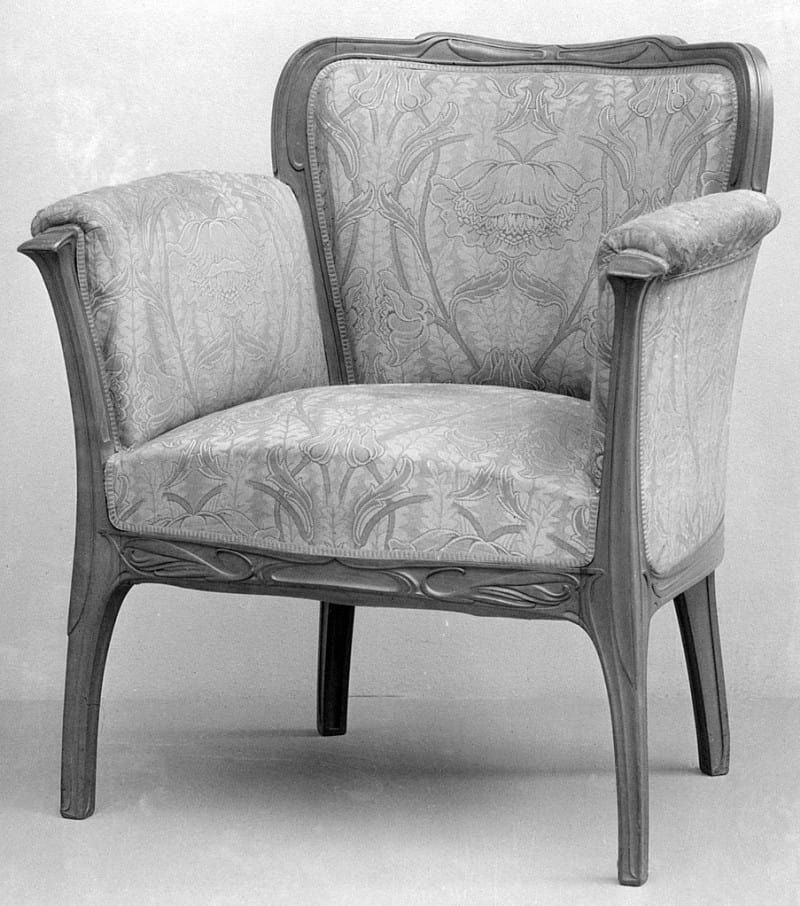
The Cambridge dictionary may define the armchair as, "A comfortable chair with two resting places for the arms," but that definition is too simplistic.
Original armchairs were crafted by artisans in ancient Egypt, Greece, Rome and China–centuries before upholstery made these chairs comfortable enough to sit in for long periods of time.
Reminiscent of thrones, early armchair types were once found only in the wealthiest homes, but carpenters borrowed the style and class distinctions disappeared. Armchairs come in a wide variety of shapes, materials, upholstery and trim and can be found everywhere, from dining table seating to living and family rooms.
13. Recliner
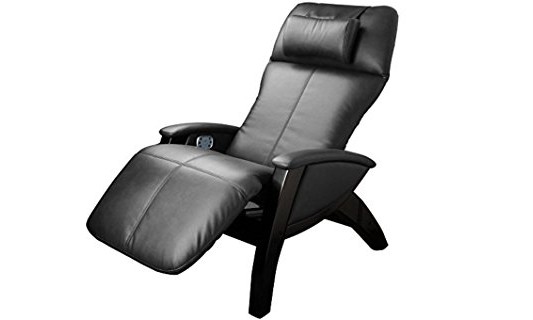
The recliner's origins date back to medical device company equipment designers who were clever enough to see the potential of antiquated operating chairs remade into household furnishings. Historians believe the first recliner was the Morris Chair, invented around 1830.
By the early 1900s, recliners were marketed as "relaxation" furnishings and were built in different shapes, materials and sizes.
La-Z-Boy became the standard bearer of the recliner the moment it was introduced in 1928. Streamlined in size and shape over the next decades, recliners may have a reputation for belonging to "the man of the house," but today's woman is as likely to have her own!
Moreover, there are specialized recliners nowadays for senior people who have mobility problems in order to help them stand-up with the push of a button.
14. Wicker Chair
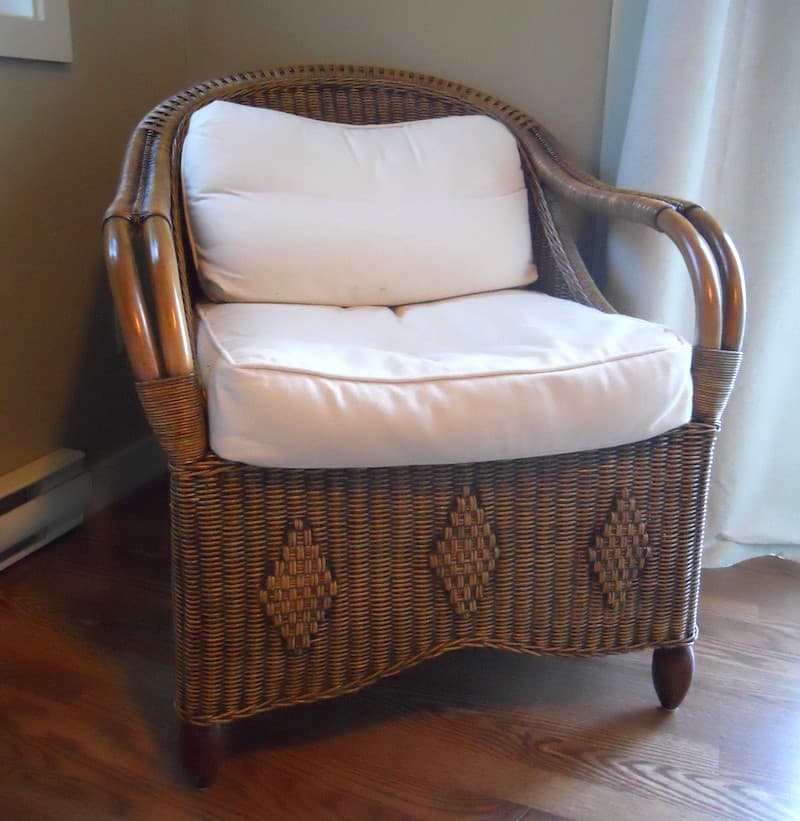
Long before "sustainability" was a buzzword, Scandinavians made wicker furnishings. The word "wika" means "to bend" and Scandinavia wasn't the only society favoring wicker: examples were found in the tomb of Tutankhamen and unearthed elsewhere around the globe.
Victorian wicker was popular in the late 1800s when Cyrus Wakefield became the most famous wicker chair designer of his day. All-natural materials remained the bastion of the wicker industry until commercial grade, synthetic wicker debuted in the mid-2000s. Synthetic wicker remains a popular alternative for homeowners who prefer materials that can't as easily be destroyed by bad weather.
15. Loveseat
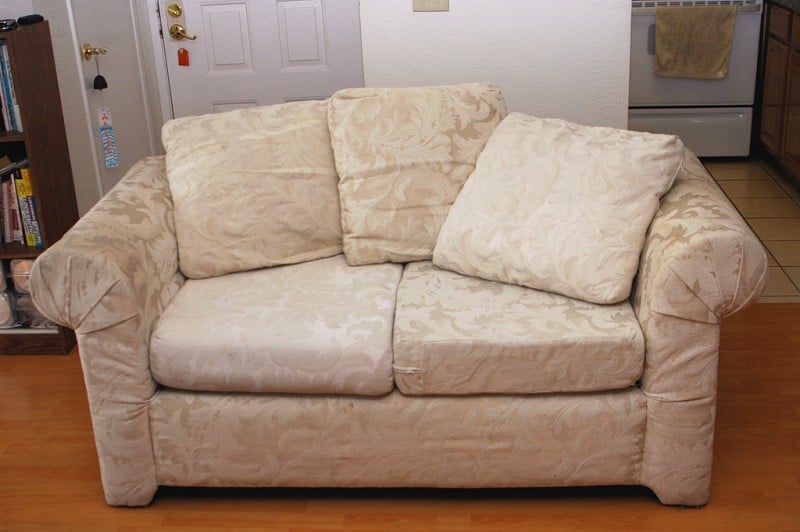
Source: https://www.flickr.com/photos/[email protected]/3685357156
Sized somewhere between a couch and a chair, loveseats were first produced in the 17th century. You may be surprised to learn that loveseats have nothing to do with romance. "Its sole purpose was not to invite cuddling and romance," say historians.
Instead, loveseats were introduced to accommodate women dressed in voluminous shirts and hoops. As fashion styles grew slimmer over time, loveseats remained favorites of people living in small spaces who may not have room for long sofas and couches. Today, pairing couches with loveseats offers homeowners a coordinated look that is so popular, these furnishings are often sold as sets.
16. Lawson Chair
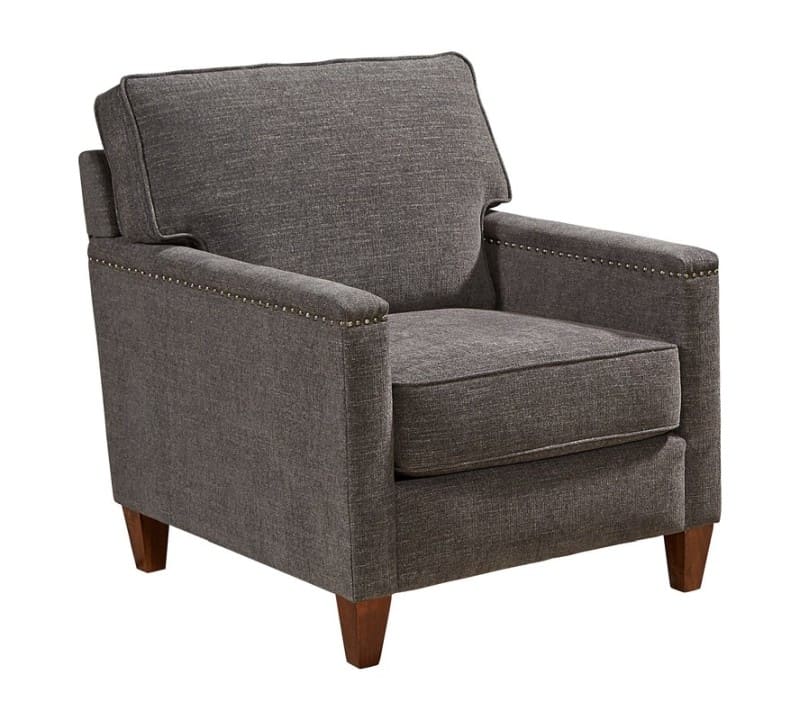
Source
If you love a good mystery, research Lawson chairs. It's not that they don't exist; it's just that this chair originated as a sofa and over time, furniture manufacturers adapted the silhouette to chairs.
The original Lawson sofa was custom-built, overstuffed and lavished with pillows, a direct order from businessman and author Thomas Lawson.
Over time, Lawson-style chairs and couches grew in popularity, but extreme stuffing was cut back as consumer tastes changed. Today's Lawson seating options remain upholstered, but you won't have to figure out how to handle as many pillows as Thomas demanded when he custom-ordered the first Lawson sofa.
17. Ottoman
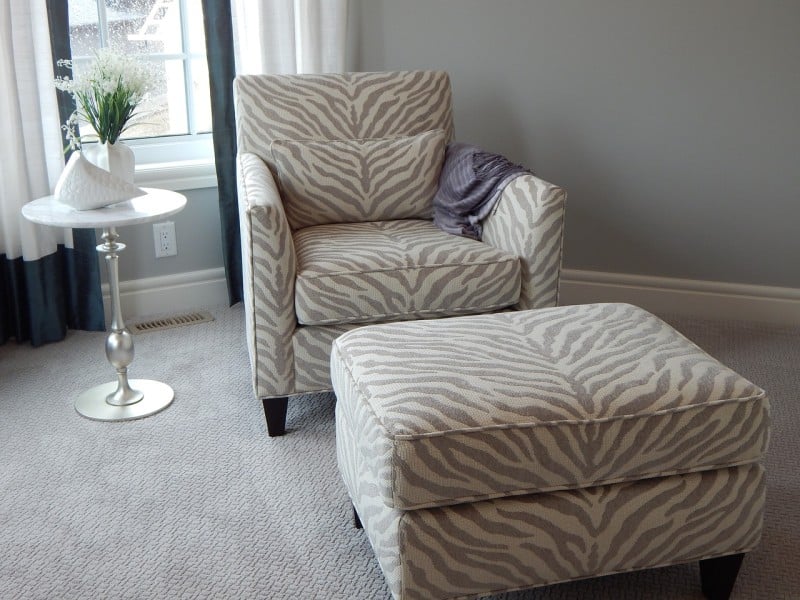
If you search the word Ottoman, you'll run into links related to the Ottoman Empire, "one of the mightiest and longest-lasting dynasties in world history," says History.com. But if you seek info on footstools capable of turning a relaxing evening into heaven for the feet, you will have to keep scrolling.
The Ottoman furniture style began as fashionable floor cushions made for Turkish homes in the late 18th Century. Eventually, the cushions became smaller and arms were added. By the 20th century, furniture makers removed those arms to create the upholstered footstools that remain in vogue today. Some have legs. Some don't. Most Ottoman owners don't care as long as they can put their feet up!
18. Wing Chair
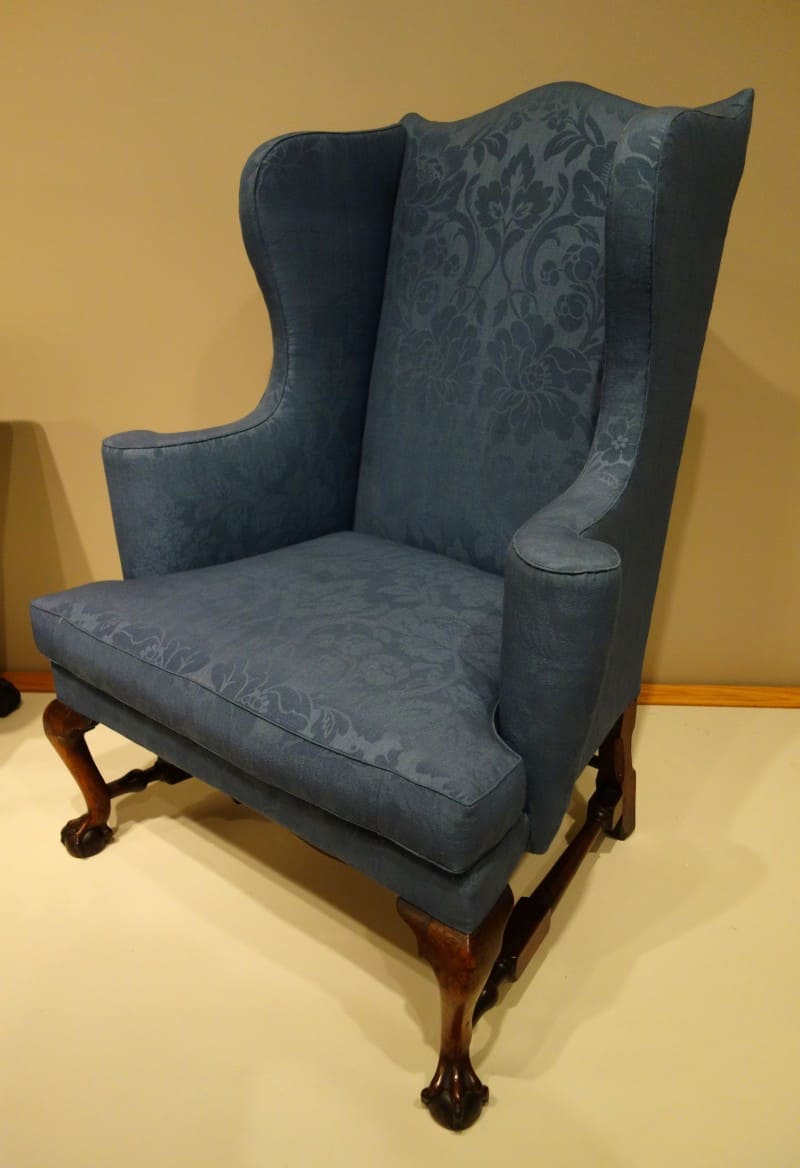
Even people who can't differentiate one furniture style from another say they have no trouble recognizing wing chairs thanks to their distinct, lofty backrests and side "wings." Known by different names over the ages, you can still ask furniture salespeople to show you fireside, wingback, easy and grandfather chairs and you'll be in the company of a wing back chair.
This chair's origins go back to the 17th century when they were made to be placed beside roaring fires where tall backs and side wings protected sitters from drafts. Adopted by myriad furniture makers over time, the Chippendale wingback one of the most easily-recognized of all.
19. Club Chair
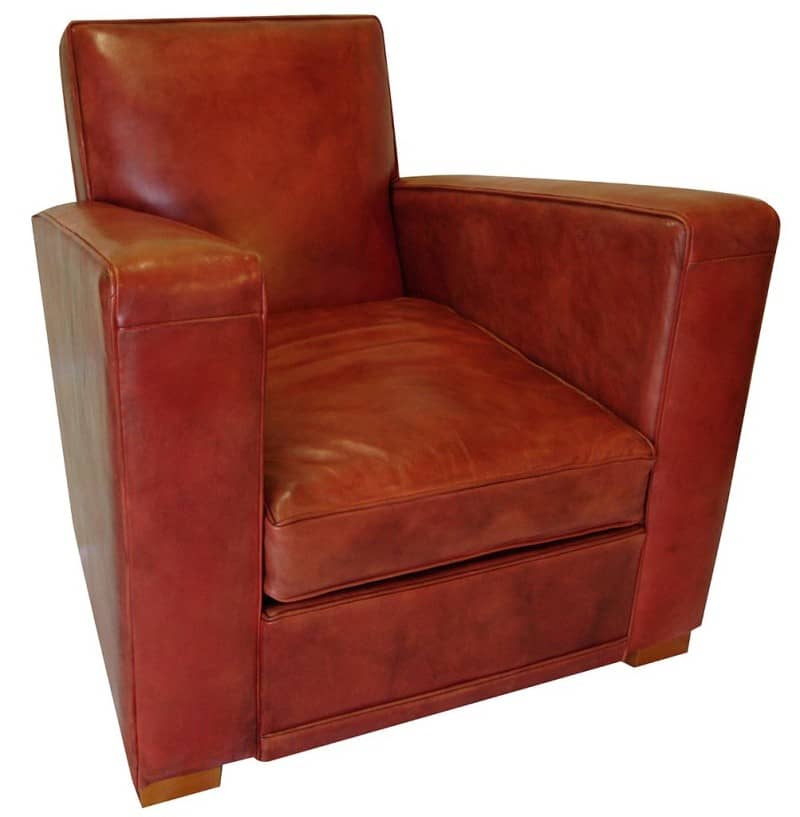
There are no membership dues required to purchase a club chair, but if you are interested in the history of this chair style, you will want to know that it began life as a shortened version of the Chesterfield sofa that was wildly popular during the 17th Century, especially in England.
By the 19th century, every gentleman's club had adopted this style of seating because they were comfortable, padded and featured wide seats. Leather has always been the preferred slip cover and classic club chairs often feature signature button embellishments that originated with the Chesterfield couch.
20. Slipper Chair
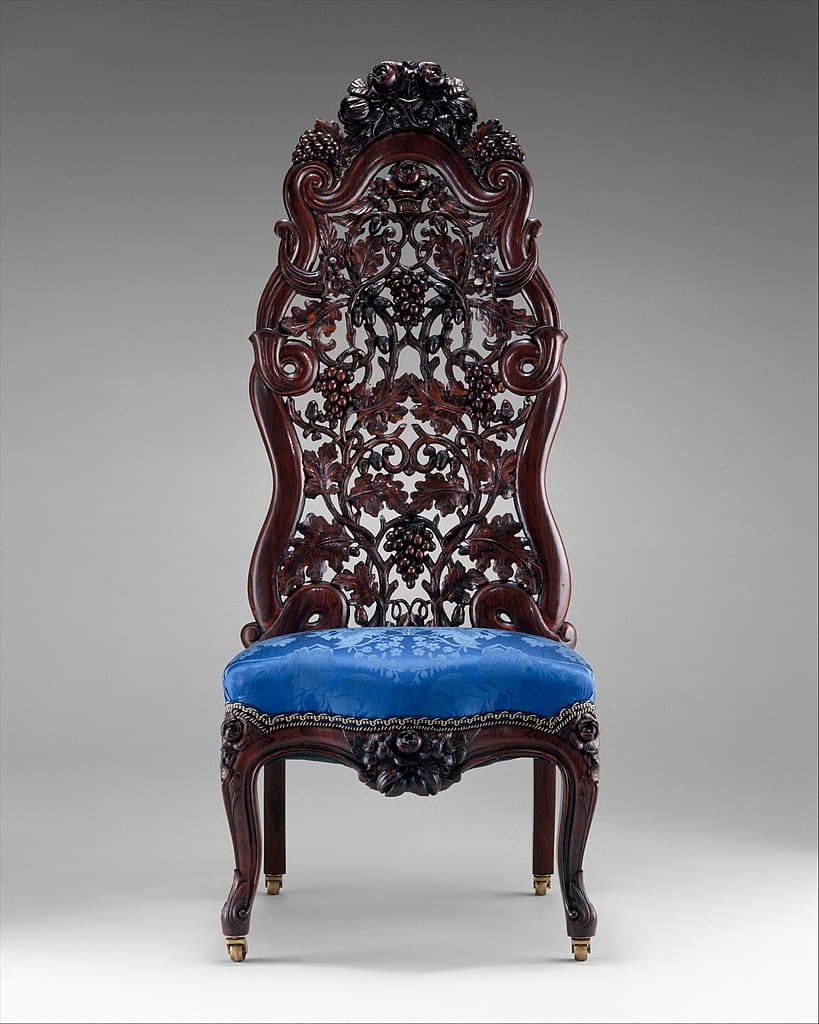
Slipper chairs first appeared on the furniture scene in the 18th century in the boudoirs of wealthy women. Why were they popular? Because there were no arms on these chairs that could hamper grooming tasks, so they were often made to accompany vanity tables.
Members of royalty loved slipper chairs because maids attending queens and princesses could easily kneel beside them to help with stockings, slippers and shoes. While originally crafted exclusively of satin, today's slipper chairs come in a variety of textiles and fit everywhere in a home, from living rooms to dens–and of course, bedrooms.
Resources
https://www.onekingslane.com/live-love-home/guide-to-accent-chairs-by-style/
https://www.ehow.com/info_8300531_accent-chair.html
https://www.houzz.com/fauteuil-chair
https://www.vandykes.com/history-of-the-rocking-chair/a/86/
https://en.wikipedia.org/wiki/List_of_chairs
http://yabeen.com/article/Furniture/materials-used-for-furniture-manufacturing
https://www.adirondack.net/history/adirondack-chair/
https://en.wikipedia.org/wiki/Chaise_longue
http://summerclassics.com/blog/longue-lounge/
https://www.theguardian.com/notesandqueries/query/0,5753,-1683,00.html
Source: https://www.epichomeideas.com/different-types-of-chairs/

Komentar :
Posting Komentar